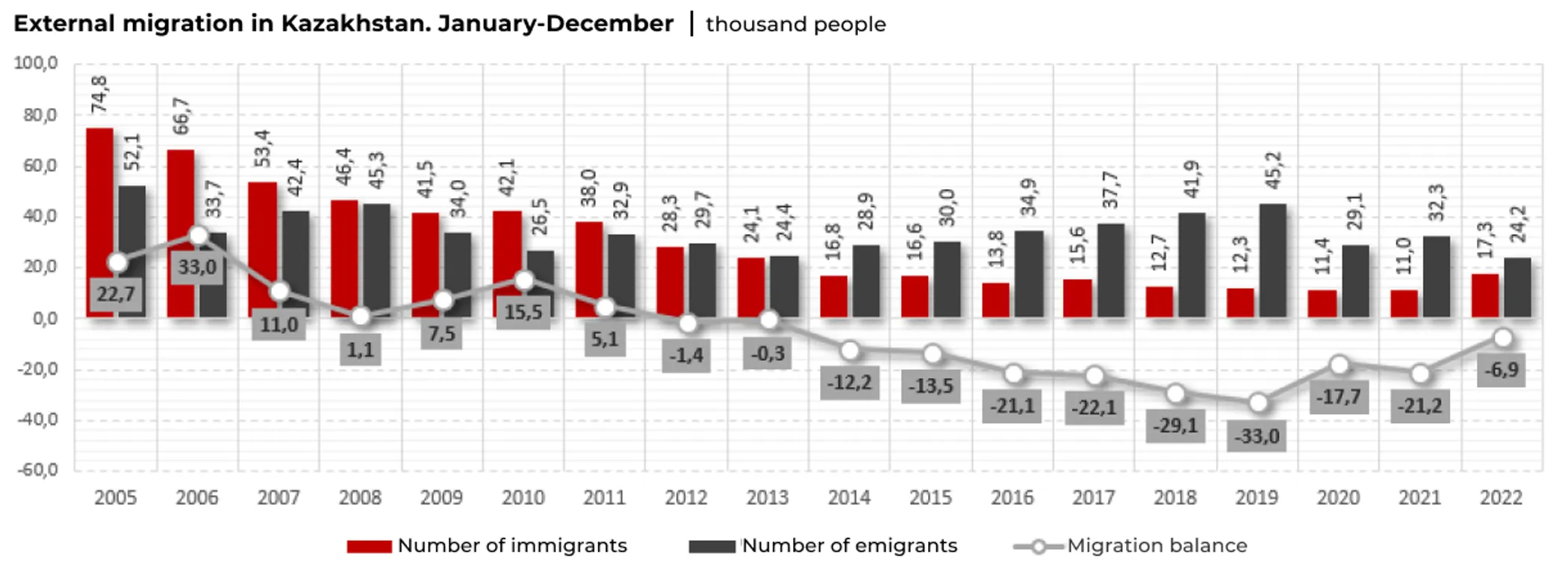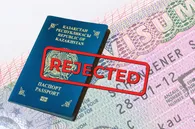Analysts at Ranking reported that the decades-long emigration rate from Kazakhstan has slowed down in 2022, while the number of immigrants continues to grow, QazMonitor reports.
For the past ten years, Kazakhstan has faced a problem where more people leave the country than entering. What’s more: the migration gap has been consistently widening each year. In 2014, about 12,200 people left the country while the figure jumped to 33,000 in 2019.

The trend slowed in 2020 due to the COVID-19 pandemic, with statistics recording only 17,700 departures. As the borders opened in the following years, the trend picked up again. According to the report from the bureau of national statistics (BNS), 21,200 people left Kazakhstan in 2021.
An unprecedented trend for national migration emerged in 2022. The number of foreign nationals considering permanent residence in Kazakhstan increased from 11,000 immigrants in 2021 to 17,300 in 2022. On the flip side, there was a decrease in the number of emigrants from 32,300 in 2021 to 24,200 in 2022.
Although still in the negative, the migration balance narrowed by 6,900 people.
Who is leaving?
According to the data shared by the ministry of labor and social protection, 367,100 citizens left the country between 2011 and 2022.
Thirty-eight percent of the emigrants have at least a bachelor’s degree, and 34% have a secondary vocational education. On the other hand, the number of foreigners with higher education who have entered the country in the last ten years has decreased by more than twofold.
Analysts suggest one of the key factors is the decrease in people moving to Russia as their destination. This is supported by the drop in the number of Kazakh nationals departing for Russia between 2021 and 2022. The difference equaled 8,000 people.

Among Kazakh nationals, people of Slavic and German ethnicities represented a large share of emigration. In 2022, the number of ethnic Russians who decided to leave Kazakhstan decreased from 21,800 to 16,100. The number of Ukrainian and Belarusian emigrants fell by 700 and Germans by 694.
Counting arrivals
The high level of immigration to the country was only partially influenced by those arriving from Russia. Of the 17,300 people who moved to Kazakhstan, Russian citizens accounted for only 5,900. The largest share of immigrants to the country were citizens of Uzbekistan – 6,500 immigrants.

The data does not reflect the high number of arrivals from Russia before and after the "partial" mobilization announced by the Russian government on September 21, 2022. This is because the BNS counts only those who came to Kazakhstan for permanent residence and submitted the relevant application to state authorities.

The ministry of internal affairs issued only 24,400 permanent residence permits. All other state services provided only temporary stay for foreigners. For example, the number of temporary residence permits issued over the past year increased from 374,900 to 469,300.
Migration policy
To better control migration flow, the labor ministry adopted a policy concept until 2027. The document is intended to address the issues of brain drain and improve the perception of Kazakhstan in the eyes of the general population, especially the younger demographic.
Proposed measures include making Kazakhstan a comfortable place for digital nomads and specialists from other work spheres. For this purpose, a special type of visa will be introduced that will allow foreign IT specialists to work remotely for companies abroad while living in Kazakhstan.

Another medium-term goal is to raise the quality of higher education in order to attract foreign applicants to local universities. This step also aims to increase the number of Kazakh students who apply for universities at home.
The desired result is for the migration balance to gain a positive value by at least 100 people in 2027 and for the number of skilled foreign workers to rise to 73.5%.










